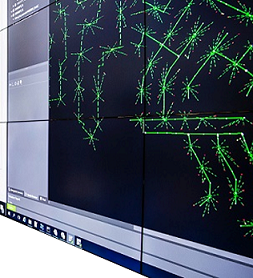- Created by Susanne Nägele-Jackson, last modified on Sep 06, 2023

There has been a lot of interest in the construction of quantum simulators ranging from special purpose simulators to flexible programmable simulators [CIR2012], [QUA2019]. There are analogue quantum simulators which are specialised physical devices that can be used to simulate the laws of nature on particle behaviour (for example, using ultra-cold neutral atoms [LIN2010] or trapped ions [FRI2008]). There are also digital quantum simulators that use digital models where qubit encoding is applied to represent quantum states and quantum gates as a quantum algorithm for the physical model [MAG2020], [BUL2009]. The following list provides more information on some of the currently existing simulator tools and their areas of application with a special focus on QKD simulators. Further examples can be found online [QUA2020], [IETF2020] and in the QKD Whitepaper.
QKDNetSim (Quantum Key Distribution Network Simulation Module)
QKDNetSim is a simulator intended to provide additional understanding of QKD technology with respect to existing network solutions [MEH2017], [QKD2020].
Qkdsimulator
A QKD-simulator web application based on a simulation engine that includes a complete Quantum Key Distribution Python-based toolkit. It offers an implementation of the entire QKD stack (quantum channel, sifting, authentication using universal hashing, error estimation, reconciliation/error correction and privacy amplification) [ATA2020].
Qiskit (https://qiskit.org/) is an open-source toolkit that helps users schedule and run quantum programs either in the cloud on a variety of simulators and quantum processors or in their local Python environment. Users have the option to build their own circuits or select some pre-built circuits from an extensive circuit library. More information...
References:
[ATA2020] Arash Atashpendar, QKD Simulator, Analysis and Online Simulation of Quantum Key distribution (QKD), https://www.qkdsimulator.com/
[BUL2009] Iulia Buluta, Franco Nori, Quantum Simulators, Oct. 2, 2009, Vol. 326, Science, https://dml.riken.jp/images/pub/nori/pdf/Science_326_108.pdf
[CIR2012] J. Ignacio Cirac, Peter Zoller, Goals and opportunities in quantum simulation, Nature physics volume 8, pages 264–266(2012), https://www.nature.com/articles/nphys2275
[FRI2008] A. Friedenauer, H. Schmitz, J. T. Glueckert, D. Porras, T. Schaetz, Simulating a quantum magnet with trapped ions, Nature Physics volume 4, pages 757–761(2008), https://www.nature.com/articles/nphys1032
[IETF2020] IETF 107 QIRG Virtual Interim Meeting, April 8, 2020,https://www.youtube.com/watch?v=zjS0j5AgSFg
[LIN2010] Yu-Ju Lin, Rob L. Compton, Karina J. Garcia, James V. Porto, Ian B. Spielman, Synthetic magnetic fields for ultracold neutral atoms, Nature 462, 628(2009), https://arxiv.org/abs/1007.0294
[MAG2020] Alicia B. Magann, Matthew D. Grace, Herschel A. Rabitz, Mohan Sarovar, Digital quantum simulation of molecular dynamics and control, June 27, 2020, https://arxiv.org/pdf/2002.12497.pdf
[MEH2017] Mehic Miralem, Oliver Maurhart, Stefan Rass, Miroslav Voznak, Implementation of quantum key distribution network simulation module in the network simulator NS-3, Quantum Information Processing 16, no. 10 (2017): 253, https://doi.org/10.1007/s11128-017-1702-z
[QKD2020] QKDNetSim, Quantum Key Distribution Network Simulation Module for NS-3, https://www.qkdnetsim.info/
[QUA2019] Quantum Simulators: Architectures and Opportunities, December 20, 2019,https://arxiv.org/pdf/1912.06938.pdf
[QUA2020] Quantiki, Quantum Information Portal and Wiki, List of QC simulators, https://www.quantiki.org/wiki/list-qc-simulators
- No labels